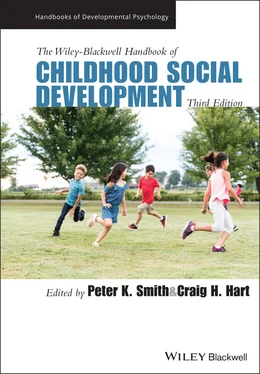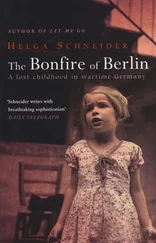I didn’t find that play has no relationship to work. They are, to use a favourite anthropological term, “integrated” … make believe play seems to be one step in an alternatively collapsing and expanding process. A child of three spends hours observing a blacksmith at work. A child of four brings his stick down on a rock repeatedly and says he is a blacksmith. A child of eight weaves with his friends an elaborate reconstruction of the blacksmith’s craft, all in make‐believe. The child of ten is a blacksmith’s helper in reality; he fetches wood for the forge and no more. At twelve he begins learning the actual skills of smithing, adding a new one every few months or so. At eighteen he is a full‐fledged blacksmith with his own forge. Parallel patterns can be observed for virtually every class of work.
He has since argued that this pattern can be more widely observed and that children learn social and economic competence within their communities through observation of their peers. The chore curriculum is a form of learning and social development which takes place outside formal educational settings, or directed teaching, by parents, and Lancy emphasizes the impossibility of separating out social development from economic, cultural, and educational development.
His work, along with that of Robert LeVine, exemplifies the interdisciplinarity of studies of children within North American anthropology. In this respect it follows the broader curriculum of anthropology as it is taught within North American universities which emphasizes a “four fields” approach; in this, equal emphasis is given to archaeology, linguistics, sociocultural anthropology, and biological anthropology. (In contrast at many British universities it is possible to gain an undergraduate degree purely in social and cultural anthropology without studying these other areas.)
There is also a strong evolutionary strand in this tradition. Evolutionary perspectives on social development (covered in detail in Chapter 4, this volume) is also an area in which anthropologists have had a significant influence. Evolutionary anthropologists have emphasized the importance of integrating understandings of cross‐cultural variation alongside biological studies of growth and development, ecology, evolution, and adaptation: arguing that childhood as a developmental phase is both biologically based and culturally diverse and that this diversity is ecologically adaptive. They have also drawn links to how childhood as a life‐history stage compares to that of other mammals, especially nonhuman primates (for a summary see Meehan & Crittenden, 2016).
Evolutionary theorists have been particularly interested in hunter‐gatherer societies, as being most representative of the kind of subsistence environment in which humans evolved. Melvin Konner has focused on hunter‐gatherer childhoods, particularly those of the !Kung of Southern Africa, and his work explores the links between extended childhood dependency, brain growth, and social learning and development. While much of his work analyzes infants and their care, Konner (2011) also gives detailed and authoritative accounts of children’s play and peer groups, which draw on biological, psychological, and ethnographic data. Similarly, Barry Hewlett’s work on hunter‐gatherers uses evolutionary theory to show how hunter‐gatherer children learn and develop socially. He argues that children’s learning in these communities is rapid and vertical until the age of five (i.e., it is passed downwards from parent to child) but becomes oblique and horizontal between the ages of six and twelve. Like Lancy, he also argues that the explicit teaching of children is rare and instead children learn through observation and imitation, especially from each other (for further details see Hewlett & Lamb, 2005).
The New Social Studies of Childhood and “Child‐Centered” Anthropology
The study of children in European anthropology has followed a different trajectory to much of that in North America and for many years it was possible to talk about two distinct, and sometimes antagonistic, traditions. The dialogue with psychology, so central to American anthropology, never had the same prominence in Europe, nor have cross‐cultural, comparative surveys or studies of childrearing. Indeed, the large‐scale, comparative work that had revealed many aspects of children’s lives in American anthropology was treated with suspicion and some disdain among certain British anthropologists. The HRAF project, such an importance source – and inspiration – for American anthropologists studying socialization, was a source of particular ire, summarily dismissed by Edmund Leach as “tabulated nonsense” (1964, p. 299). E. E. Evans‐Pritchard was no more complimentary, writing of the HRAF that: “it is full of contradictions and of assertions and suppositions without supporting evidence. The statistical survey covering two hundred and fifty societies displays … poor sampling, crude itemization, arbitrary and inadequate criteria of classification – an almost unbelievably uncritical use of sources’ (1965, p. 26).
With such sources dismissed, and studies of child development largely delegated to psychology, British anthropological studies that centered on children were uncommon before the 1970s. There were a few exceptions (Goody & Goody, 1967; Read, 1968) and a larger number of ethnographic monographs where children made fleeting appearances, or merited an implicit acknowledgment that they had a role in legitimating marriage or fulfilling the filial obligations that lie at the heart of kinship (see Montgomery, 2009), but neither socialization nor social development were of great interest. Children were seen as knowing little about their culture, they did not take part in the public practices of religion or politics, or if they did it was completely passively, and they had not yet learnt how to behave or think “properly.” As Jean La Fontaine put it (1986, p. 10), anthropology was characterized by “an outdated view of children as raw material, unfinished specimens of the social beings whose ideas and behaviour are the proper subject matter for social science.” Even those who worked directly on issues affecting children did not ask them about the processes they were going through. Writing in the 1950s about girls’ initiation rites among the Bemba of Zambia, for example, Audrey Richards (1956, p. 63) acknowledged the absence of the girls’ opinions and wished she had asked them what they had experienced and how they understood it. Instead in her published work she commented that the girls being initiated “are both the centres of the ceremony, and yet the least interesting of the actors in it.”
By the early 1970s however this marginalization of children started to be questioned by anthropologists and sociologists who began to reconceptualize studies of childhood. Spurred on by the rise of feminist anthropology in the late 1960s which argued that women had been systematically side‐lined in both description and theory, by (usually) male social scientists who looked only at the public, male world of politics, religion, or other formal institutions and had ignored the domestic world of women and children, there were calls for a critical rethinking of children’s lives and their role in society. In 1973 Charlotte Hardman published a ground‐breaking article which tentatively asked, “Can there be an anthropology of childhood?” In it she claimed that childhood and children’s worlds were valid and valuable subjects for ethnographic research, making the point, since taken as axiomatic by later anthropologists, that “children [are] people to be studied in their own right”’ (1973, p. 87). This article also set the tone for some of the later debate about the role of psychology, arguing that studies of social development were intrinsically adult‐orientated and future‐focused and a way of using children to discuss other issues but failing to see them as interesting or relevant in their own right. Hardman was explicitly critical of the work on children’s social development pioneered in the previous decades by Mead, the Whitings, or LeVine, claiming that such work viewed children:
Читать дальше












